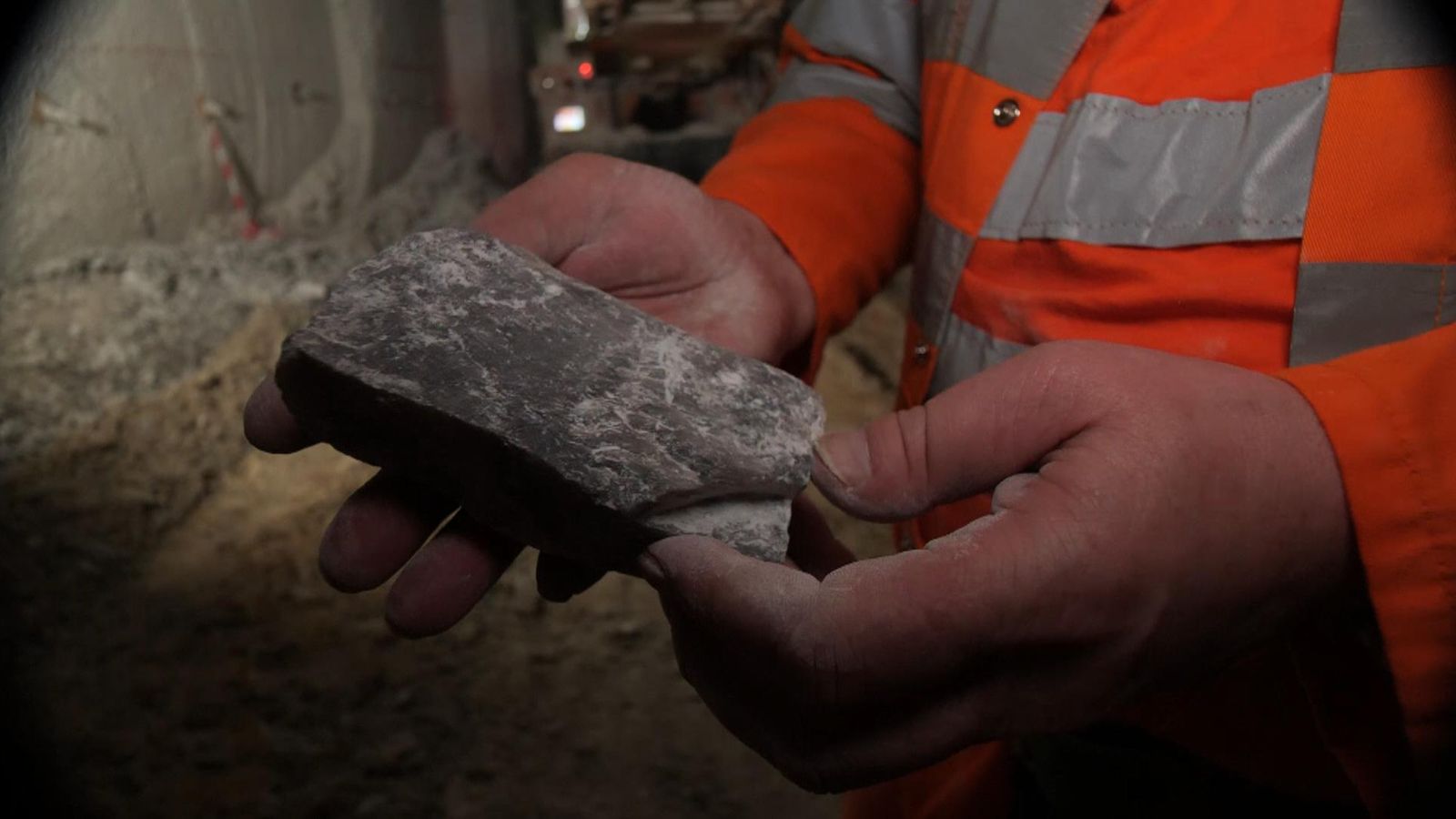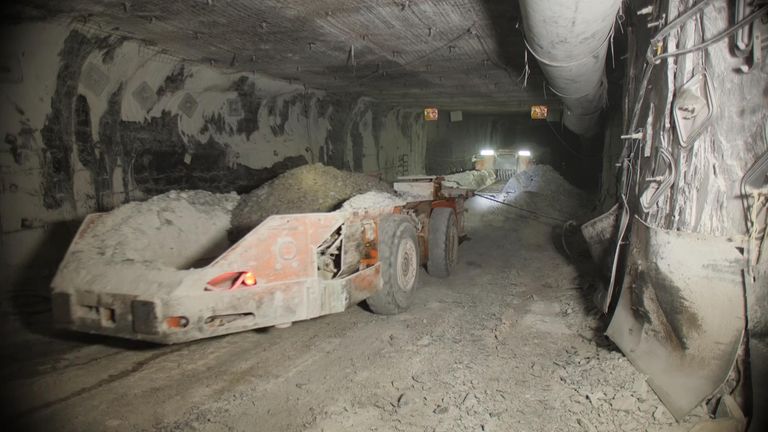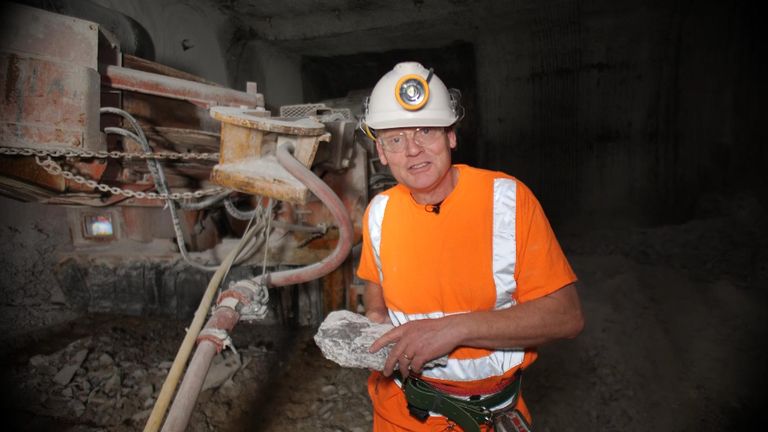What lies 1,000 metres beneath the North Sea could help the climate of the atmosphere above. And I’m on my way down to see it.
The rattly lift drops at 10 metres per second, the speed of a sprinter, ruffling the air and flapping my shorts as it plunges down. Yes shorts.
I wear a lot of PPE on location in my job but this is the first time I’ve donned hi-vis beachwear accessorised with bright orange shin-pads. It’s needed because one danger the miners face is heat.
This far below, you’re closer to the Earth’s core so the temperature climbs to 40C. All the workers carry litres of water or specialist hydration fluids.
My guide is Richard Severn, head of operations here at the ICL Boulby mine in the North York Moors. Going down isn’t the end of the journey, we still need to go along.
“It’ll be about 40 minutes to where the guys work, about 7km – we’ll go under the North Sea… but you won’t see any fish… otherwise something has gone wrong.”
The world we drive through is moon-dust grey: after a shift the workers gain a ghostly pallor and gear left unused for a few days acquires powdery drifts.
As we get nearer the face, huge tunnelling machines and rubble carriers rumble by as if driven straight from the set of the Aliens movie.
But just as I slide into eerie sci-fi daydreams, we pass picnic tables crammed with day-glo miners devouring pasta and chicken from outsized lunchboxes. All as deep below ground as a Scottish mountain summit above.
Finally, we get to the face and see the mining machine. At its front end is a spinning, steel-toothed and tungsten-tipped barrel all controlled by a man standing 20 metres back with what looks like an elaborate games controller. He keeps his distance lest they hit a gas pocket which can blow out and bury anything too close.
What is polyhalite?
Hundreds of miners come down here every day to extract a mineral called polyhalite. It is dark grey and layered like a thick crumbly slate and made up of potassium, magnesium, calcium and sulphur.
These minerals all nourish crops, especially potatoes, vegetables and fruit. They hope to replace potash which takes much more energy and chemicals to process.
Richard Severn said: “Polyhalite is a multi-nutrient fertiliser that needs very little processing. We just mine it, crush it, screen it, spread it on the field and that’s it. Because it’s quite an energy efficient process we’re about 85% less carbon than similar fertilisers.”
Making and using fertiliser is one of the big contributors to global warming – at around 5% of greenhouse gases, it’s up there with cement and steel. Within chemical fertilisers, nitrogen is the biggest driver of climate change and, whilst the polyhalite doesn’t contain nitrogen, it works in the soil to enable plants to use it more efficiently.
“It assists roots with the uptake of nitrogen. So effectively you have to spread less nitrogen on the crop,” he added.
Back on the surface, the polyhalite rubble is ground into varying granule sizes and then poured into train wagons bound for Teesport and shipping across the world.
Billions invested in Woodsmith mine
This British resource is virtually limitless as it spreads beneath much of the North Sea and beyond. But inconveniently, the easiest access is in the middle of a National Park making some locals and planning officers very wary of big industrial developments and associated truck traffic.
This wasn’t enough to dissuade another mining giant, Anglo American, from investing billions of pounds in the new Woodsmith mine deep within the park.
Click to subscribe to ClimateCast with Tom Heap wherever you get your podcasts
They’re lessening the local landscape impact with a 23-mile tunnel – Britain’s longest – running up to Teesport to take all the mineral from the mine. Some observers think both projects are a big financial gamble given the rollercoaster price of fertiliser and farmers’ caution about adopting new products.
But Kathryn Bartlett, a soil scientist working for Anglo American believes polyhalite’s time has come.
“We are needing more food with less land, and at the same time we need to reduce our carbon emissions.
“So, agriculture has to go through some kind of change. We believe that polyhalite is one of the potential solutions to the change that’s needed.”




